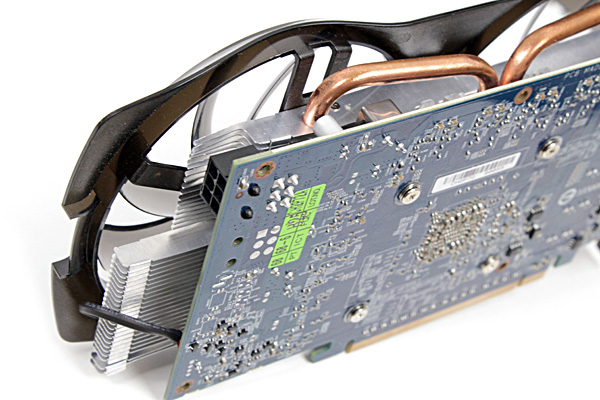Index
The factory overclock is the culprit for higher GPU temperatures, but the card comes with powerful WindForce 2x cooler, a cooler with two 10cm fans.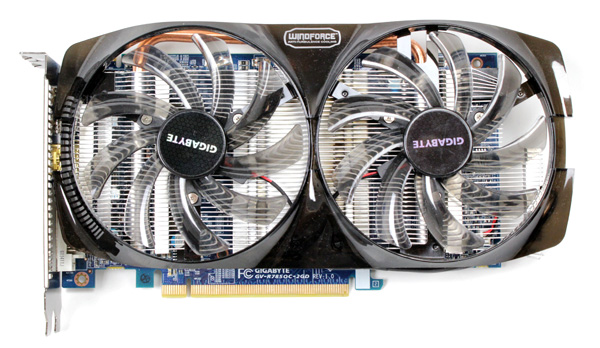
Each fan makes an airflow of 30.5 CFM. The fans exceed the PCB boundaries but in this case it’s a good thing since they cool heatpipes that stick out beyond the PCB. The heatpipes are in direct contact with the GPU. 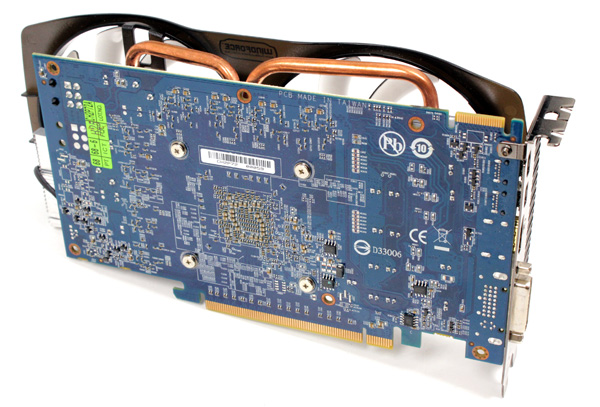
One of the secrets to quality cooling is that the fans and the heatsink are angled. You can’t tell this at a glance, but once you look at the card from the side, you’ll see for yourself. The angle lowers the turbulence between the two fans. 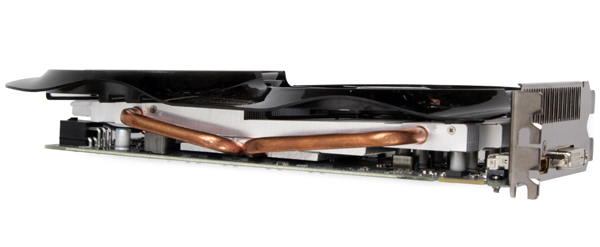
Although the plastic frame seems a bit shaky, it’s actually quite stable. 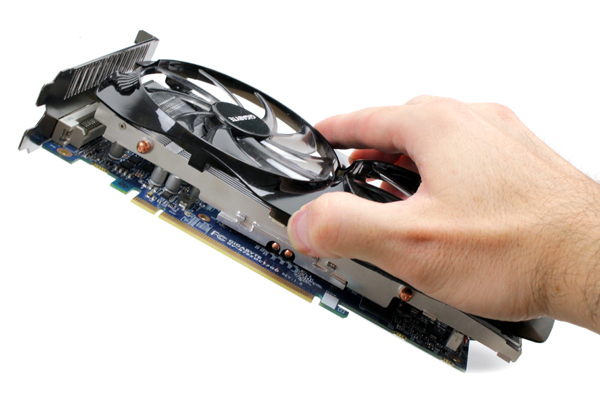
By using low profile fans, Gigabyte made sure that the cooler does not exceed two slots. HD 7850 OC WindForce is about 227mm long and about 120mm tall.
Both fans are on the same power cable and you can manage RPM via any standard tool, including AMD Overdrive. Note however that Auto regulation worked just fine, so we just left it as it is. 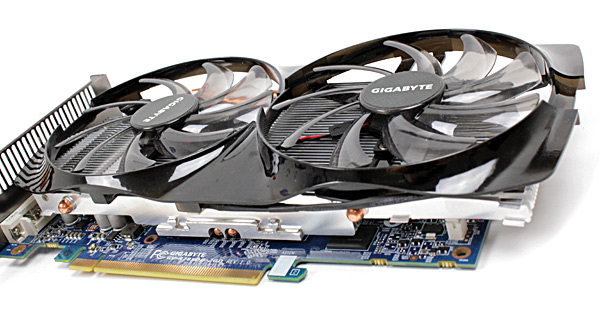
The card uses 4-phase VRM design, with GIGABYTE's Ultra Durable 2 combination of Solid State Capacitors, Ferrite Core chokesandlow RDS(on) MOSFETs.
Gigabyte 7850 TwinForce card is equipped with 2048MB GDDR5 memory. The GDDR5 memory chips are made by Hynix (model number H5GQ2H24MFA-T2C). They are specified to run at 1250MHz (effective 5000MHz). The chips are cooled by fan air only.
The reference design provides two mini DisplayPort 1.2 connectors, HDMI and a single dual-link DVI out, and the seme setup is used on Gigabythe's card. HDMI 1.4a provides HD audio and supportfor Blu-ray 3D movies. It will simultaneously support three displays, although the third display must be connected via DisplayPort.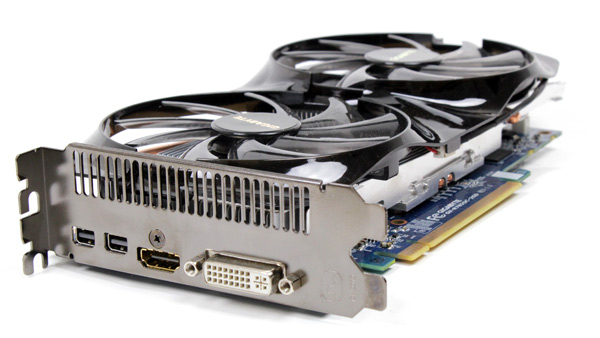
You may combine the Gigabyte's 7850 TwinForce card with another HD 7850 card from any vendor in CrossFire. Flexible CrossFire bridge helps with reaching the connectors, even though the plastic shroud is in the way. 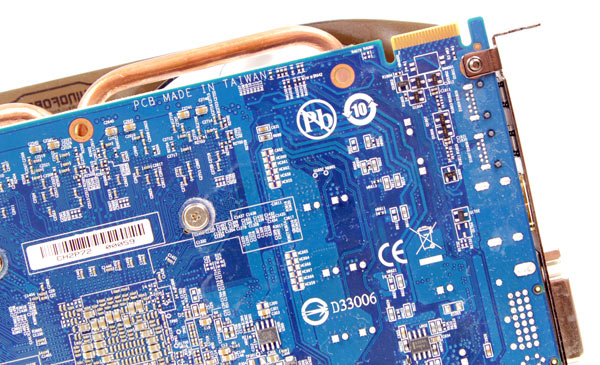
The card is powered via one 6-pin power connector, which is easily accessible thanks to the cutout in the heatsink. 